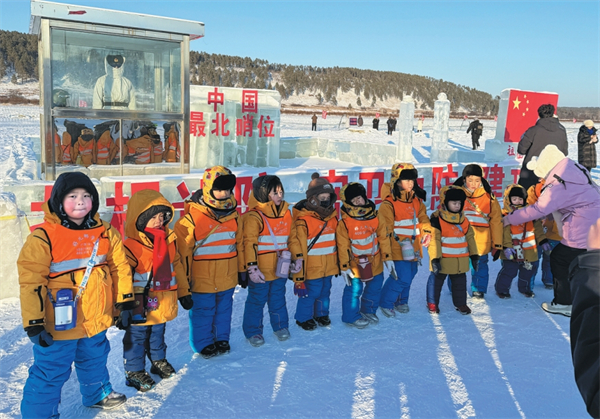Home>Harbin Today
In 10 years: Harbin enjoys improved ecological environment
Updated : 2022-09-30
By ( e.my399.com )
Over a 10-year period, Harbin advanced the prevention and control of pollution in air, water and land.
In August 2019, Harbin ranked third in the national air quality status ranking released by the Ministry of Ecology and Environment.
By 2021, Harbin took the lead in the province to realize the "zeroing" of coal-fired boilers below 35 steam tons in built-up areas, and the ultra-low emission transformation of coal-fired boilers above 65 steam tons.
From 2020 to 2021, a total of 2.10 million metric tons of scattered coal were reduced or replaced.
In 2021, the days with good or excellent air quality in Harbin city reached 310, achieving the best results on record.
In terms of water treatment, Harbin had carried out water pollution control and quality improvement projects in its 46 water systems since 2018.
By 2021, all the 25 water bodies once identified by the national standard as bad water quality in Harbin city had been lifted out of the list.
In recent years, Harbin's efforts to reduce pollutant emissions have been rewarded by nature. The wetland ecological environment known as the "kidney of the earth" has been continuously restored, and the species of wild animals in the city have continued to increase.
In 2018, Harbin was named the first batch of "International Wetland City" by the International Wetland Organization.
In February 2020, the Hadong Riverside Wetland Reserve in Harbin was included in the List of Wetlands of International Importance.
Currently, Harbin has a total wetland area of 198,700 hectares. Rare birds such as the endangered oriental white stork and Chinese merganser duck also frequently appear in the city.
Additionally, in 2021, Harbin added greening covering 45 hectares, bringing the total greening in the built-up areas of Harbin to 16,299 hectares.

Harbin ramps up childcare services
A new comprehensive service center for childcare in Harbin is expected to be finished by the end of the year.
-
Talent policies drive enterprise development in Harbin
Harbin's "30 New Talent Policies" represents an iterative upgrade to the talent policy system, helping attract and retain talent to bolster economic and social development.
-
Official website of 2025 Asian Winter Games goes live
Harbin, the host city of the 9th Asian Winter Games, has announced that the official website for the 2025 event has recently gone live.
-
Harbin launches measures to facilitate more foreign trade
In the first three quarters of 2023, the total import and export value of Heilongjiang province's goods trade hit 218.22 billion yuan.





